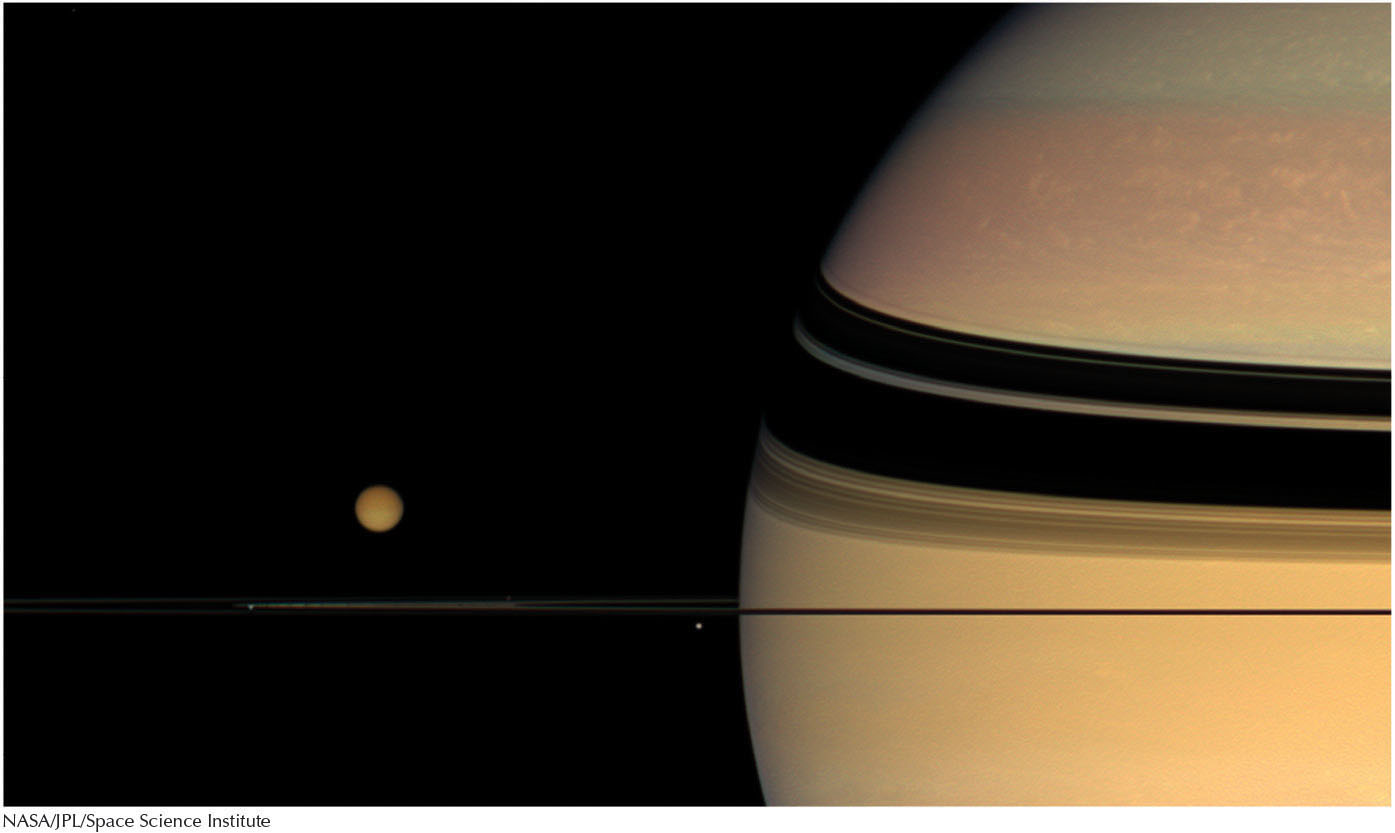231
CHAPTER [strong]8[/strong]

The Outer Planets
WHAT DO YOU THINK?
 Is Jupiter a “failed star”? Why or why not?
Is Jupiter a “failed star”? Why or why not?
 What is Jupiter’s Great Red Spot?
What is Jupiter’s Great Red Spot?
 Does Jupiter have continents and oceans?
Does Jupiter have continents and oceans?
 Is Saturn the only planet with rings?
Is Saturn the only planet with rings?
 Are the rings of Saturn solid ribbons?
Are the rings of Saturn solid ribbons?
Answers to these questions appear in the text beside the corresponding numbers in the margins and at the end of the chapter.
232
We can easily imagine a trip to Mars, exploring its vast canyons and icy polar regions. Even Venus and Mercury lend themselves to being compared to Earth and the Moon. However, we find few similarities between Earth and the giant outer planets: Jupiter, Saturn, Uranus, and Neptune. Until recently, Pluto was also considered one of the outer planets. That has changed, as described in Section 5-8. Now Pluto is categorized as a dwarf planet; we will explore it in Chapter 9.
The four giant worlds lack solid surfaces and are so much larger, rotate so much faster, and have such different chemical compositions from our planet that upon seeing them one knows, to paraphrase Dorothy, “You’re not on Earth anymore.” There is nothing on Earth remotely similar to the swirling red and brown clouds of Jupiter, the ever-changing ring system of Saturn, or the blue-green clouds of Uranus and Neptune. The outer four worlds collectively have at least 169 moons, which have an amazing range of shapes, sizes, and surfaces. Some of these moons have water interiors; some have volcanoes; some have surface ice; one, Titan, has a thick atmosphere; and one, ice-covered Hyperion, is arguably the most bizarre-looking object in the solar system. We begin our exploration of the outer planets, and their moons and rings, with magnificent Jupiter.
In this chapter you will discover
 Jupiter, an active, vibrant, multicolored world more massive than all of the other planets combined
Jupiter, an active, vibrant, multicolored world more massive than all of the other planets combined
 Jupiter’s diverse system of moons
Jupiter’s diverse system of moons
 Saturn, with its spectacular system of thin, flat rings and numerous moons, including bizarre Enceladus and Titan
Saturn, with its spectacular system of thin, flat rings and numerous moons, including bizarre Enceladus and Titan
 Uranus and Neptune, ice giants similar to each other and different from the gas giants Jupiter and Saturn
Uranus and Neptune, ice giants similar to each other and different from the gas giants Jupiter and Saturn
233